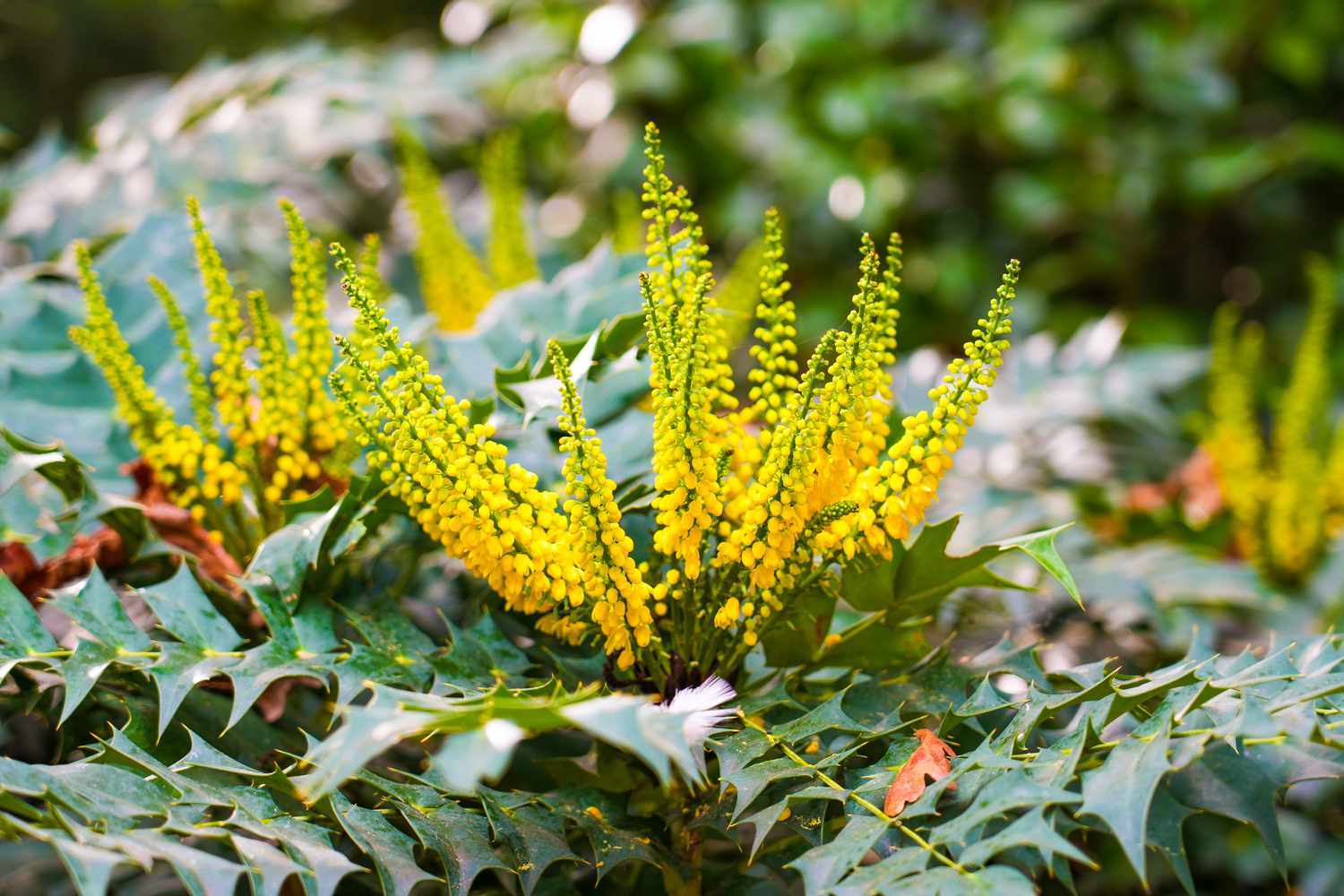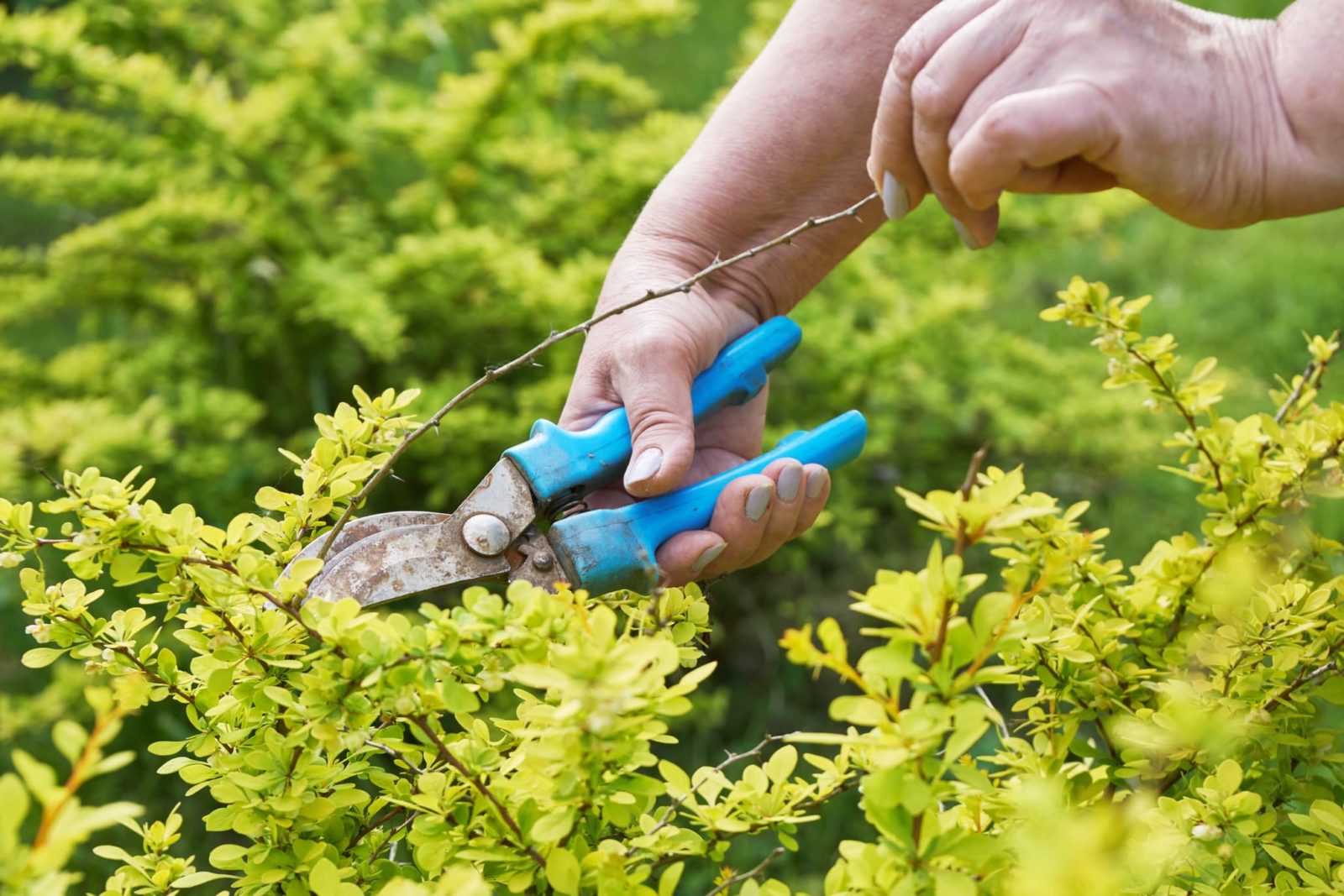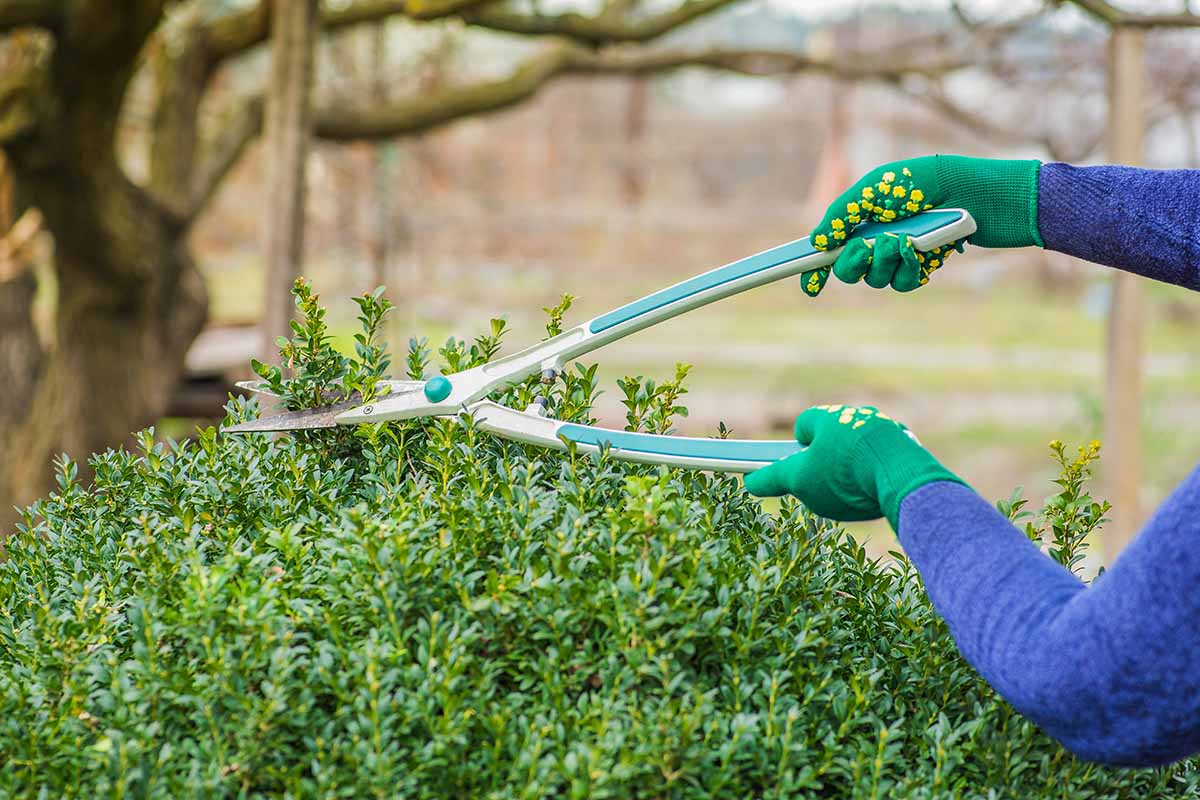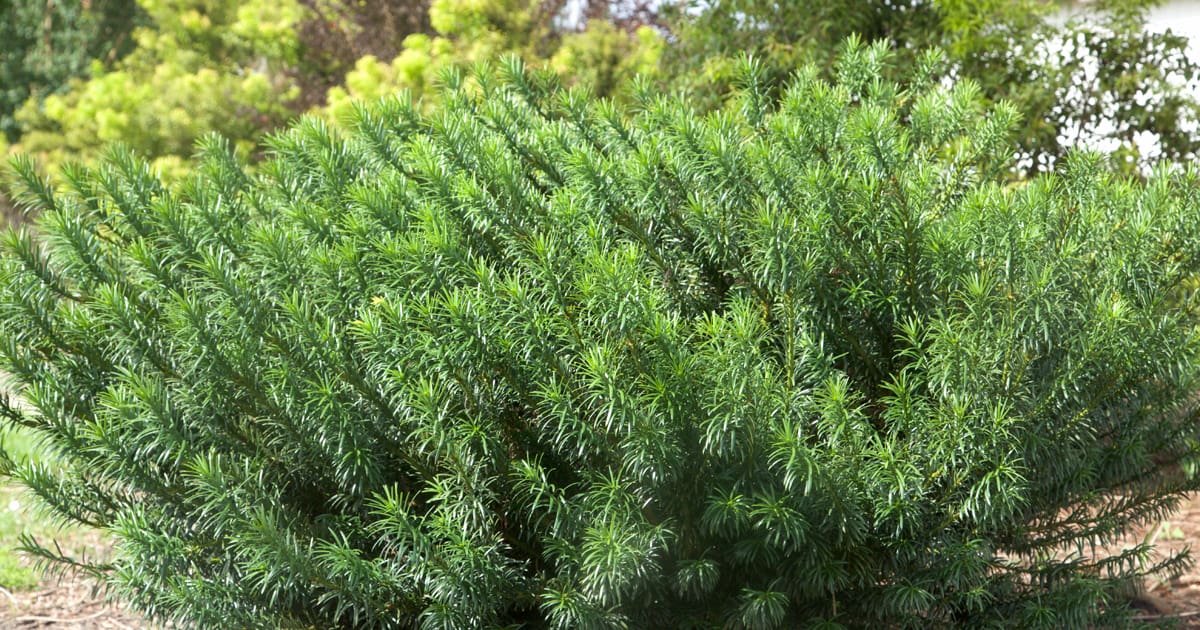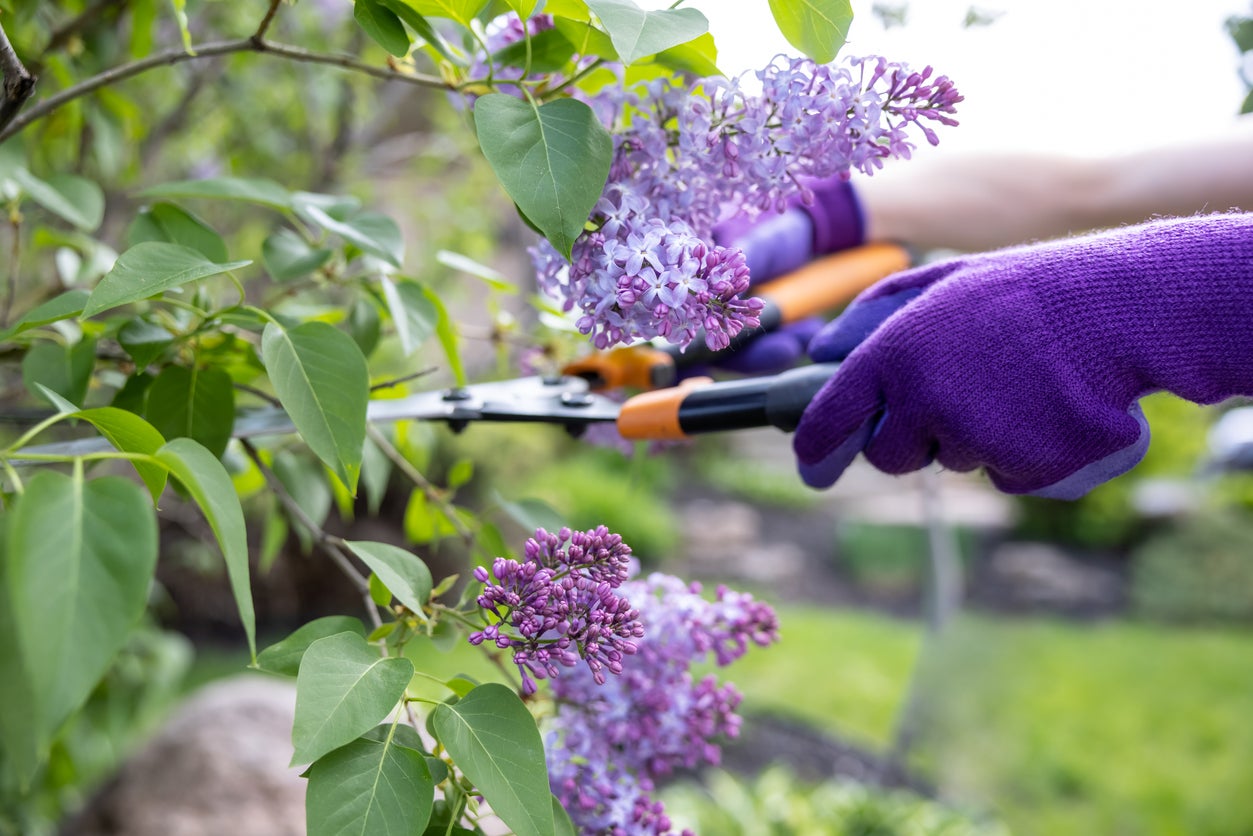Home>Gardening Techniques>Plant Care>When To Prune Evergreen Shrubs


Plant Care
When To Prune Evergreen Shrubs
Modified: January 22, 2024
Learn when and how to properly cut back evergreen shrubs in order to maintain healthy growth and promote lush foliage. Discover essential plant care tips for successful pruning.
(Many of the links in this article redirect to a specific reviewed product. Your purchase of these products through affiliate links helps to generate commission for Chicagolandgardening.com, at no extra cost. Learn more)
Table of Contents
Introduction
Evergreen shrubs are a beautiful and versatile addition to any garden or landscape. With their lush foliage and year-round greenery, they provide a sense of structure and visual interest. However, like any plant, evergreen shrubs require regular maintenance to ensure their health and longevity. One important aspect of maintaining evergreen shrubs is knowing when and how to cut them back.
Knowing when to cut back your evergreen shrubs is crucial to promoting proper growth and maintaining their desired shape. While pruning can be intimidating for some, it is a necessary task that, when done correctly, can benefit the overall health and appearance of your plants.
In this article, we will explore the factors to consider when deciding to cut back evergreen shrubs, the signs that indicate it’s time for pruning, the best time to prune, the tools and techniques you’ll need, as well as common mistakes to avoid. By understanding these key elements, you’ll be equipped with the knowledge and confidence to keep your evergreen shrubs thriving.
So, grab your gardening gloves and let’s dive into the world of evergreen shrub care.
Factors to Consider
Before reaching for your pruning shears, it’s important to consider a few factors that will help determine whether or not it’s the right time to cut back your evergreen shrubs.
First and foremost, understanding the specific species and variety of your evergreen shrubs is essential. Different types of evergreen shrubs have different growth habits and pruning requirements. Some shrubs may only require minimal pruning to maintain their shape, while others may benefit from more extensive pruning to promote new growth.
Another factor to consider is the overall health of your evergreen shrubs. If you notice any signs of disease or damage, it’s crucial to address those issues before proceeding with pruning. Pruning unhealthy shrubs can further weaken their condition, so it’s best to consult a plant care expert or take steps to remedy any existing problems before cutting back.
The desired shape and size of your evergreen shrubs is also an important factor to consider. Do you want them to have a formal, manicured look, or are you aiming for a more natural and organic shape? Knowing your desired outcome will help guide your pruning decisions.
Furthermore, consider the location and growing conditions of your evergreen shrubs. Are they situated in a sunny or shady area? Do they receive sufficient water and nutrients? Understanding the specific needs of your shrubs will influence the timing and extent of pruning.
Lastly, take into account the time and resources you have available for pruning. Some evergreen shrubs require more frequent and meticulous pruning, while others can be left to their own devices with minimal maintenance. Assess your own availability and capabilities to determine the level of pruning you can accommodate.
By considering these factors, you will be able to make informed decisions about when and how to cut back your evergreen shrubs, ensuring their long-term health and beauty.
Signs That It’s Time to Cut Back Evergreen Shrubs
While there is no one-size-fits-all answer to when you should prune your evergreen shrubs, there are several signs that indicate it’s time to give them a trim. These signs can help you determine whether your shrubs are outgrowing their space, becoming overgrown, or suffering from any issues that pruning can address.
One of the most obvious signs that it’s time to cut back your evergreen shrubs is if they have become overgrown and lost their desired shape. This can happen over time as the shrubs continue to grow and expand. Pruning can help restore their aesthetic appeal and maintain a balanced and well-defined shape.
Another sign is if your evergreen shrubs are encroaching on walkways, blocking windows, or interfering with other plants in your garden. Trimming them back will not only improve the overall appearance and functionality of your outdoor space but also ensure that neighboring plants have enough light and space to thrive.
Additionally, look out for any dead or diseased branches on your evergreen shrubs. These can be identified by their brittle appearance, lack of foliage, or discoloration. Removing these branches through pruning will not only improve the overall health of your shrubs but also prevent the spread of disease or infestation to the rest of the plant.
If you notice any signs of weak or spindly growth, such as thin and leggy branches, it may be time to cut back your evergreen shrubs. Pruning can encourage new, vigorous growth and help promote a denser and more attractive shape.
Lastly, consider the overall age and maturity of your shrubs. While some evergreen shrubs benefit from annual pruning, others may only require pruning every few years to maintain their ideal size and shape. Understanding the specific needs of your shrubs will help you determine when it’s time to pick up your pruning shears.
By keeping an eye out for these signs, you can maintain the health, appearance, and longevity of your evergreen shrubs through timely and regular pruning.
Best Time to Prune Evergreen Shrubs
The timing of pruning is crucial when it comes to evergreen shrubs, as it can greatly influence their growth and overall health. While the specific timing may vary depending on the species and variety of your shrubs, there are some general guidelines to keep in mind.
In general, it is recommended to prune evergreen shrubs during their dormant season, which is typically in late winter or early spring. Pruning during this time allows the shrubs to recover from any stress and promotes new growth when the weather becomes more favorable.
That being said, it’s important to note that not all evergreen shrubs follow this rule. Some species, such as rhododendrons and azaleas, should be pruned immediately after they finish blooming. Pruning these shrubs too early can remove the flower buds and diminish their bloom for the following year.
On the other hand, if your evergreen shrubs have a more compact and formal shape, you may need to perform light pruning throughout the year to maintain their appearance. This can include removing any unruly or overgrown branches, as well as lightly shaping the shrubs to retain their desired form.
Regardless of the specific timing, it’s important to avoid pruning evergreen shrubs during periods of extreme heat or drought. Pruning during these conditions can put additional stress on the shrubs, making them more susceptible to damage or disease.
It’s also worth mentioning that dead or damaged branches can be removed at any time of the year to promote the health and aesthetics of your evergreen shrubs. If you notice any signs of disease or damage, it’s important to address them promptly to prevent further spread.
In summary, the best time to prune evergreen shrubs is typically during their dormant season in late winter or early spring. However, it’s important to consider the specific needs and bloom cycles of your shrubs, as well as local weather conditions, to determine the optimal timing for pruning. By pruning at the right time, you can encourage healthy growth and maintain the desired shape and appearance of your evergreen shrubs.
Tools and Techniques for Pruning Evergreen Shrubs
When it comes to pruning evergreen shrubs, having the right tools and using proper techniques is essential to achieve the desired results without causing harm to the plants. Here are some of the essential tools and techniques to keep in mind:
1. Pruning Tools: Make sure you have the necessary tools before you begin pruning. These typically include sharp bypass pruners, loppers for thicker branches, pruning saw for larger cuts, and hedge shears for shaping. Ensure that your tools are clean and sharp to make clean cuts and minimize damage to the plants.
2. Sterilizing Tools: It’s important to sterilize your pruning tools before each use, especially if you are working on diseased plants. This helps prevent the spread of diseases from one shrub to another. You can use a solution of one part bleach to nine parts water to sanitize your tools.
3. Pruning Techniques: When pruning evergreen shrubs, it’s crucial to use proper techniques to avoid damaging the plants. Start by removing any dead or diseased branches, making clean cuts close to the main branch or trunk. To maintain the shape of the shrub, selectively prune back branches that are growing out of bounds or crossing each other. Avoid over-pruning, as it can weaken the shrub’s overall structure.
4. Shaping Techniques: If you want to shape your evergreen shrubs, use hedge shears to trim the outer foliage. Gradually trim the branches back, following the natural shape of the shrub. Take care not to cut into the wood of the shrub, as this can lead to damage and dieback.
5. Step Back and Observe: Throughout the pruning process, take breaks and step back to observe the progress. This will help you assess the overall shape and make adjustments as needed. Remember, pruning is an art form, and it’s important to have a clear vision of the desired outcome.
6. Clean-up: Proper clean-up is essential once you have finished pruning your evergreen shrubs. Remove all pruned materials and dispose of them properly. This will prevent any diseases or pests from lingering around your plants.
Remember that specific techniques and tools may vary depending on the type of evergreen shrub you are pruning. It’s always a good idea to research the specific needs of your plants or consult with a professional for guidance.
By using the right tools and techniques, you can effectively prune your evergreen shrubs to maintain their health, shape, and overall beauty.
Common Mistakes to Avoid When Cutting Back Evergreen Shrubs
Pruning evergreen shrubs may seem like a simple task, but there are several common mistakes that can negatively impact the health and appearance of your plants. By being aware of these mistakes, you can avoid them and ensure successful pruning. Here are some common mistakes to avoid:
1. Over-Pruning: One of the most common mistakes is over-pruning. Removing too many branches or foliage can weaken the shrub and disrupt its natural growth patterns. It’s important to prune conservatively, removing only what is necessary to maintain the shape and health of the plant.
2. Pruning at the Wrong Time: Pruning at the wrong time can have detrimental effects on evergreen shrubs. Pruning during active growth periods or during extreme heat or drought can stress the plants and make them more susceptible to disease or damage. Make sure to follow the proper pruning timing for your specific shrubs.
3. Incorrect Cutting Technique: Using improper cutting techniques can lead to jagged or uneven cuts, which can make the shrub more prone to diseases and pests. Always use clean and sharp tools to make clean cuts close to the main branch or trunk. Avoid tearing or ripping the branches.
4. Neglecting to Sterilize Tools: Failing to sterilize your pruning tools can spread diseases from one shrub to another. Before pruning each individual shrub, sterilize your tools with a bleach solution or rubbing alcohol. This simple step can help prevent the spread of infections.
5. Ignoring Safety Measures: Working with sharp tools and reaching high branches can be hazardous. Always prioritize safety by wearing gloves, safety glasses, and appropriate footwear. Make sure that ladders or step stools are stable and secure before climbing.
6. Disregarding the Natural Shape: Evergreen shrubs have their own natural shape and growth pattern, and pruning them into a completely different shape can be detrimental to their health. Instead, aim to enhance the natural form of the shrub and avoid excessive shaping.
7. Failing to Clean Up Properly: After pruning, it’s important to clean up any debris, including fallen leaves and cut branches. Leaving debris around the shrubs can attract pests and diseases, impacting the health of the plants.
By avoiding these common mistakes, you can ensure that your evergreen shrubs are pruned in a way that promotes their health, longevity, and aesthetic appeal. Take your time, follow proper techniques, and prioritize the well-being of your plants to achieve the best pruning results.
Conclusion
Properly caring for your evergreen shrubs includes knowing when and how to cut them back. By considering factors such as species, health, desired shape, and growing conditions, you can determine the ideal time to prune. Signs such as overgrowth, encroachment, disease, and weak growth indicate that it’s time to trim your shrubs. Remember, the best time to prune evergreen shrubs is typically during their dormant season in late winter or early spring. Utilize the right tools, apply the correct techniques, and always prioritize the health of your plants.
During the pruning process, be mindful of common mistakes to avoid, such as over-pruning, incorrect cutting techniques, and neglecting to sterilize tools. Safety should always be a priority when working with pruning tools, ladders, or step stools. And don’t forget to clean up properly after pruning to prevent the spread of pests and diseases.
Properly maintaining evergreen shrubs through pruning will not only enhance their appearance but also promote their overall health and longevity. Regular pruning will help maintain the desired shape, control size, and encourage new growth. With the right knowledge, techniques, and care, your evergreen shrubs will thrive and continue to bring beauty and vitality to your garden for years to come.

